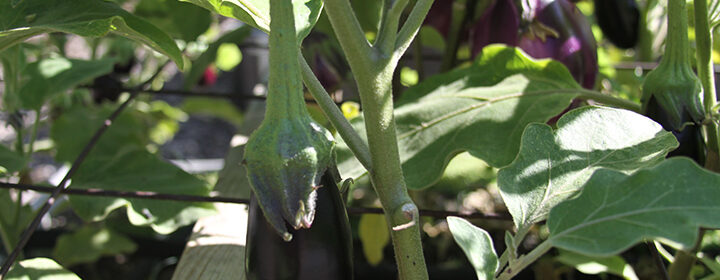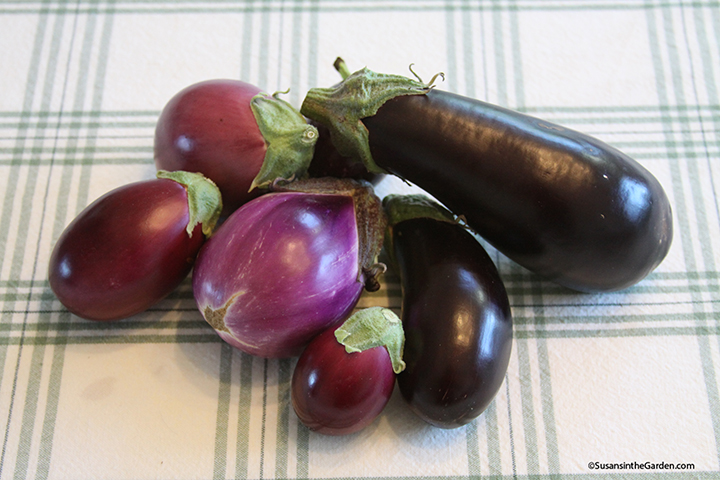How to Grow Eggplants

Would you like to grow eggplants? This relative of the tomato isn’t difficult to grow but it can be tricky knowing when it harvest it. Find out my tips below.
Latin Name: Solanum melongena
Plant Family: Nightshade (Solanaceae)
Warm-season crop
Did You Know?
I’ve noticed there are two schools of thought on eggplants: those who love them and those who despise them. But if you’ve never grown your own and used them to make amazing dishes such as ratatouille or eggplant parmesan, you’re missing out. Add a couple of plants to your garden this year and give them a try.
Plant Seeds or Seedlings? To grow eggplants, start them from seed indoors or purchase plants from a nursery.
When: 8 to 10 weeks before the average last frost date. Transplant seedlings outdoors once all danger of frost has passed and they have been through a weeklong hardening-off process. That involves slowly acclimating the plants to the intensity of the sunlight over the course of about a week.
Days to Germination: 10 to 21 days
Depth to Sow: 1/4 inch
Spacing: 1 to 2 feet apart
Days to Maturity: 70 to 80
Cultural Information:
Remember that all members of the Nightshade family should be planted in different locations each year for 3 years. This is called crop rotation and it helps eliminate or decrease instances of insect and disease problems.
Prepare the planting bed by adding compost and bonemeal to the top 3 inches. To plant each seedling, dig a hole and press the soil around the roots to eliminate air pockets. Feed them with some organic nitrogen fertilizer such as diluted fish emulsion at half-strength, and repeat in about 2 weeks.
Cover the bed with floating row cover to create a greenhouse-like environment and leave in place for 2 to 3 weeks. At that point, remove it to allow pollinators access to the flowers. Since the developing fruits are fairly heavy, stake each plant.
Sometimes, eggplants are susceptible to sunscald (sunburn) which manifests as patches of pale skin. To prevent this, keep the plants healthy and well-watered so they have plenty of leaves to shade the fruits. Avoid excessive pruning of leaves. Consider placing a cover of shade cloth over the crop before summertime temperatures become intense.
Susan’s Picks: ‘Orient Express’, ‘Patio Baby’, ‘Rosa Bianca’, ‘Traviata’, ‘Violetta Lunga’.
Potential Insect Problems: Colorado potato beetle, cutworm, flea beetle, tomato hornworm.
When to Harvest:
The skin should be glossy and the flesh should spring back when squeezed. The fruits should also be the expected mature color, depending on the cultivar.
How to Cook & Preserve:
Roasted eggplant is delicious in side dishes or can be used to make Baba Ganoush dip for appetizers. As mentioned above, ratatouille is an excellent dish containing freshly-picked eggplant. Try grilling slices of eggplant or adding it to lasagna. The fruits will keep for up to 5 days on the kitchen counter and 2 to 3 weeks in the vegetable drawer of the refrigerator. You can also freeze eggplant for later use by blanching slices or chunks for 4 minutes in boiling water. Cool it off in ice water, drain and pack them into freezer bags. It should last up to a year in the freezer.
My Videos About Growing Eggplants:
- Garden Success With GreenStalk Planters
- Organic Insect Control: Flea Beetles, Hornworms, Slugs & Snails
Back to Vegetable Grow Guide Chart
Copyright: Susan Mulvihill, Susan’s in the Garden, SusansintheGarden.com.

